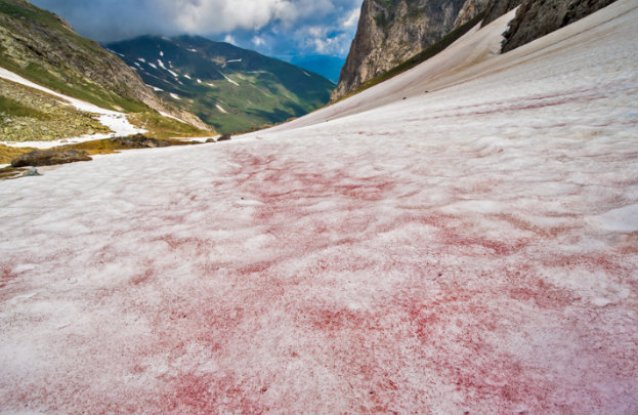
According to a study published in Nature Communications, there are certain species of green algae that thrive in snow, that actually take on a red hue, as does the snow they’re residing in. As they take over the snow, they reduce the reflectivity or “albedo” of the snow or ice, which accelerates the rate at which they melt. This is horrible considering the fact that the Arctic has everything going against it, like warming temperatures from the burning of fossil fuels, ocean currents are preferentially taking the warmest water directly towards it, and Arctic Amplification is causing sea ice, glaciers, and ice caps to melt at an alarming rate.

The lower the albedo of the snow, the more heat they’ll absorb, and the faster the snow will melt. The presence of this algae lowers the albedo of the snow, which is accelerating the dispersion of the snow and ice and causes it to melt at a faster rate. As this study’s huge analysis of 21 glaciers in the European Arctic points out, this “watermelon snow effect” is getting increasingly more potent as time goes by. These algae are not constrained to certain small regions of the snow cover either, even the lowest estimates suggest that half of the snow surface of glaciers in this region contain red algae by the time melting has wound down.

This type of algae lays dormant in the winter and waits for the ice to begin thawing and the surrounding areas to warm before they grow and replicate into the nearby environment. Sadly, record early glacier melts are most likely causing them to blossom earlier, which means that they are reducing the albedo of the snow and ice earlier than ever before. This algae has a remarkably efficient cycle, it can reduce the surrounding snow’s albedo by up to 13 percent. This reduction is substantial considering the fact that it commonly occurs in areas that are covered by large sheets of ice or glaciers.
“Our results point out that the “bio-albedo” effect is important and has to be considered in future climate models,” lead author Stefanie Lutz, postdoc at the German Research Centre for Geosciences GFZ and at the University of Leeds, said in a statement.
